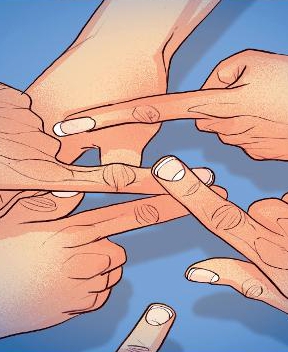
I have two pet peeves when it comes to playing games. While minor in every way, I have a very hard time not getting outwardly annoyed.
The first is having people leave the game table for no real reason at all. I understand the need for bio-breaks and the like, but to leave the table, even when it isn’t your turn, is kind of like walking away from a conversation when someone is talking to you. But more on that one later.
The second, and what I want to talk about here, is having other people tell another player what to do.
Let me be clear that I am not saying that helpful suggestions are unwarranted. In fact, they are crucial to help your child (and other players) avoid vapor lock and get back into the game. What I am talking about is when another player at the table, without prompting or invitation, takes it upon themselves to immediately tell other players what they should or should not do on their turn.
In the 1970s, David A. Kolb and Ron Fry, educational theorists who focused on experiential learning, developed the Experiential Learning Model (ELM). To very quickly summarize, ELM is based on the following key points:
- concrete experience
- observation of and reflection on that experience
- formation of abstract concepts based upon the reflection
- testing the new concepts
Or, to put it another way, “trial and error”. Keep this in mind.
When one person plays a game for another, you deny that person the necessary concrete experience to learn the game for themselves. While you might think you are helping, you are in fact hindering.
I’ll be the first to admit that 99.9% of the time helping kids understand what they need to do next is not only crucial to being a good parent, but more than necessary when it comes to Life in general. Adults tend to talk a lot, but we, as parents, must also keep in mind that too much talking is not a good thing.
There is a balancing act here. Instruction and observation is necessary tactic for parents. It is the hope of all parents to teach their young children to fly, so to speak, so they can one day leave the proverbial home nest and go out on their own. We cannot fly for them.
Let’s circle this back to games before we go too far off into the realm of parenting theory and styles.
The balancing act, wherein the parent teeters between instruction and observation, is a constant back and forth. For example, when a child is playing a game for the first time, the parent is almost always leaning heavily towards instruction. However, once the game is taught, the rules understood, and the basics well grounded, the adult needs to teeter towards observation. And when we observe, what should we be?
We should be quiet. Be silent, patient, and watch. Give an approving smile and a gentle look. Communicate to the child with non-verbal body language that you have full confidence in them playing the game for themselves. If they need help, have them ask for it. Self empowerment is, well, a powerful thing. Give your children that power, that authority over their own actions. And, yes, when it seems like it’s taking longer than it really should, prompt them to talk about what they are thinking. It is still their turn, their decision, their move. Don’t rob them of it.
In the end, a child will learn more and have a richer experience if you give them the ability to think on their own. You, as a parent, are there to help guide and support. Believe it or not, you are doing so in a very powerful way by giving your child their independence, allowing them to make their own mistakes and learning from them. Trial and error is essential to the learning process and what safer and more comfortable way to experience it firsthand than at the family gaming table?




I couldn’t agree more! I hate it when people play my games for me. But you are right, it is a balancing act. I don’t want my kids to stress out too much about their moves, but I don’t want them to feel they are on their own either.
Great article!